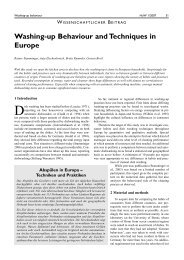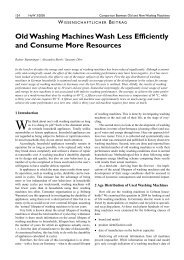Development of a novel mechatronic system for mechanical weed ...
Development of a novel mechatronic system for mechanical weed ...
Development of a novel mechatronic system for mechanical weed ...
You also want an ePaper? Increase the reach of your titles
YUMPU automatically turns print PDFs into web optimized ePapers that Google loves.
1.3 Weed management<br />
Introduction<br />
Weeds are the natural result <strong>of</strong> defying nature’s preferences <strong>for</strong> high species<br />
diversity and covered ground. Theoretically, any plant growing in the wrong<br />
place at wrong time can be considered as a <strong>weed</strong> (Parish 1990).<br />
The total absence <strong>of</strong> <strong>weed</strong>s can be attained only with introduction <strong>of</strong> herbicides,<br />
but the complete removal <strong>of</strong> <strong>weed</strong>s may also cause problems. In that case<br />
insects have no alternative but to attack the crop itself and there is no suitable<br />
cover <strong>for</strong> predators <strong>of</strong> crop pests (Altieri and Letourneau 1982).<br />
Generally <strong>weed</strong>s can be divided into two broad categories – annuals and<br />
perennials. Annuals germinate from seed each year, grow quickly, mature in<br />
one growing season, flower, set seeds and die in less than 12 months.<br />
Perennial <strong>weed</strong>s live more than one year and recover or regrow from dormant<br />
stolons, rhizomes or tubers as well as from seed.<br />
A soil seedbank present on the field contains a so called “memory <strong>of</strong> the land”.<br />
It has a great influence on the future plant population and reflects the history <strong>of</strong><br />
soil management and cultivation, not just in the previous season but over many<br />
years (Buhler et al. 1997). In the surface soil layer, down to plough depth, <strong>weed</strong><br />
seedbanks may vary in density from zero to more than one million seeds per<br />
square meter. It is confirmed that any cultivation operation will stimulate another<br />
flush <strong>of</strong> <strong>weed</strong>s to germinate, if huge reserves <strong>of</strong> <strong>weed</strong> seeds are present in the<br />
soil. Sometimes when the field is “clean” with low level <strong>of</strong> <strong>weed</strong>s, where there<br />
has been no or limited seeding in the previous season, vertical mixing or<br />
inversion <strong>of</strong> the soil should be avoided as this will bring up un-germinated<br />
seeds.<br />
Many <strong>weed</strong> species could be present in the seedbank but usually some species<br />
are predominant, comprising 70 to 90% <strong>of</strong> the total number <strong>of</strong> seeds. The<br />
biggest impact on the seedbank comes from the plants producing seeds within<br />
the field, although there are different mechanisms <strong>of</strong> seeds introduction. Weed<br />
seeds remain dormant in the soil until conditions are favourable <strong>for</strong> germination.<br />
Some annual <strong>weed</strong>s have extremely long living seeds which can survive more<br />
9





